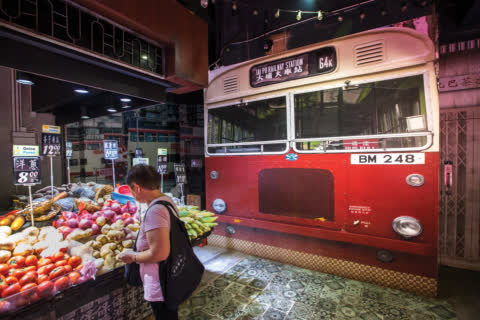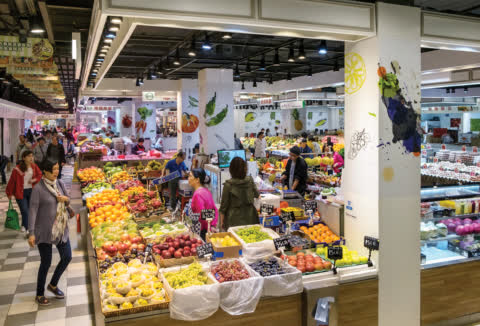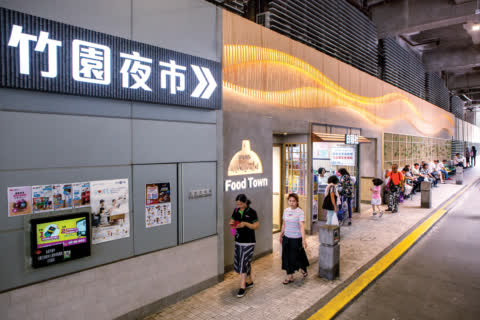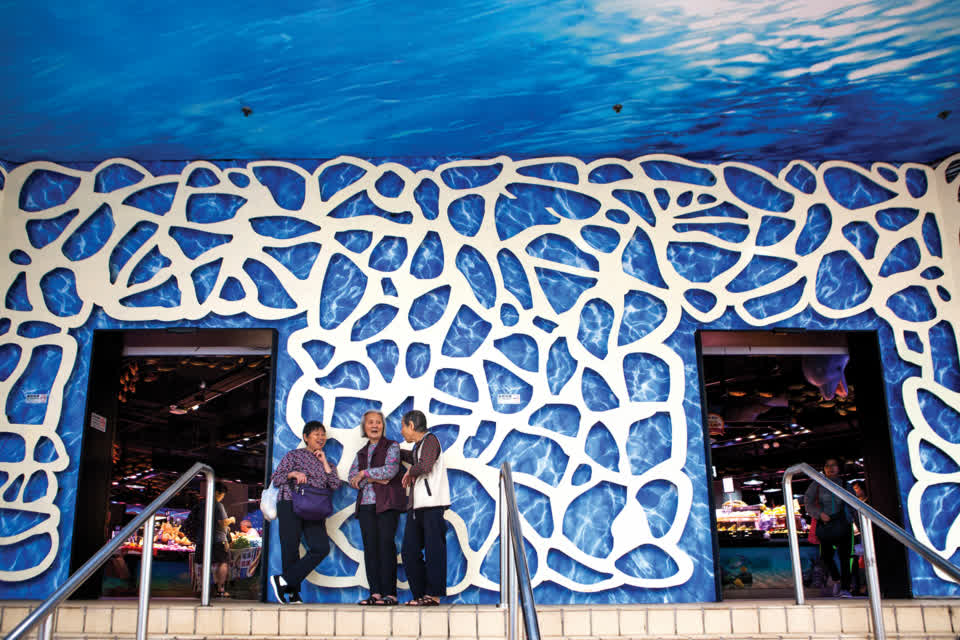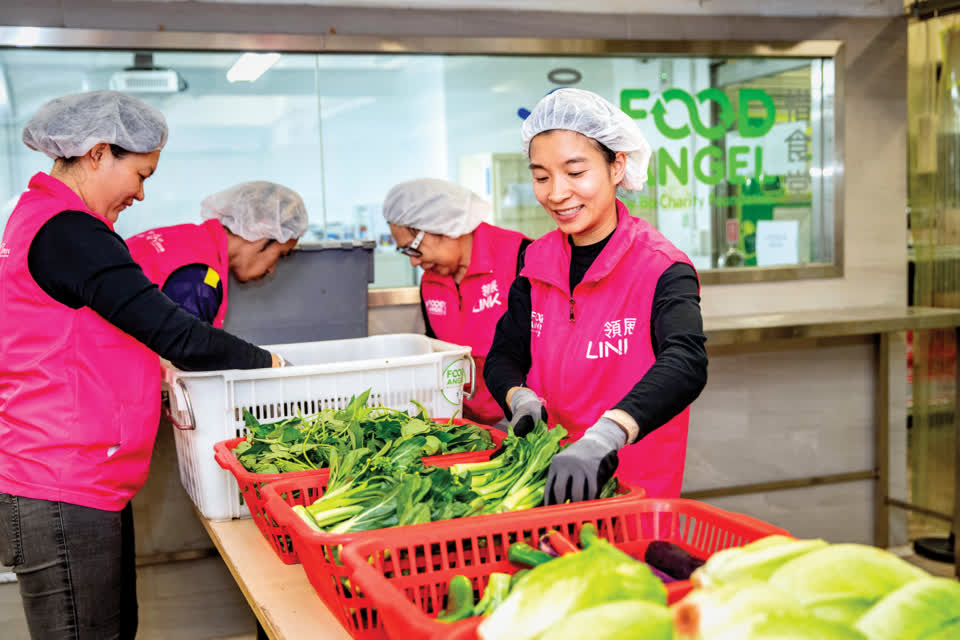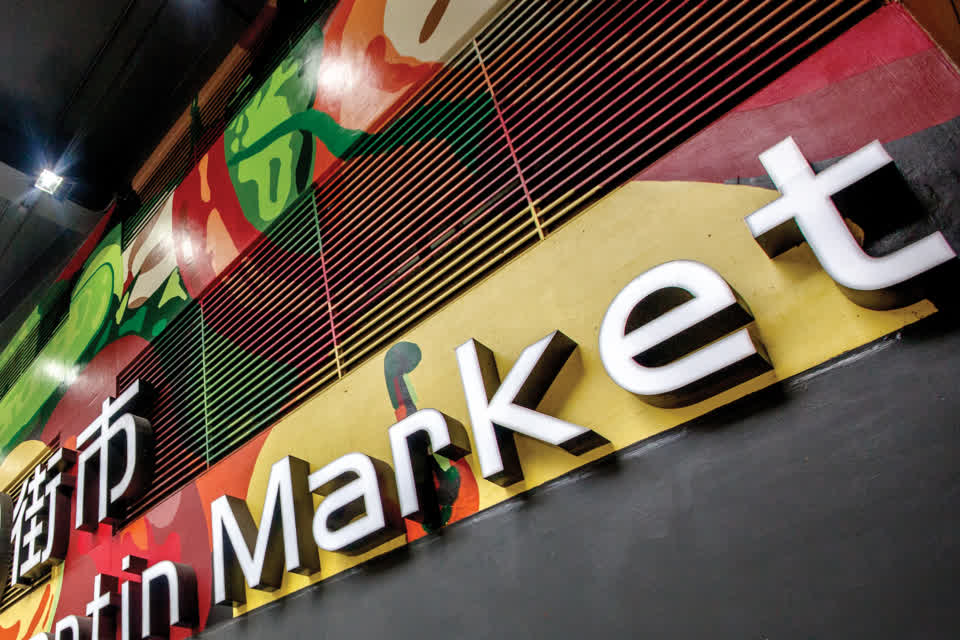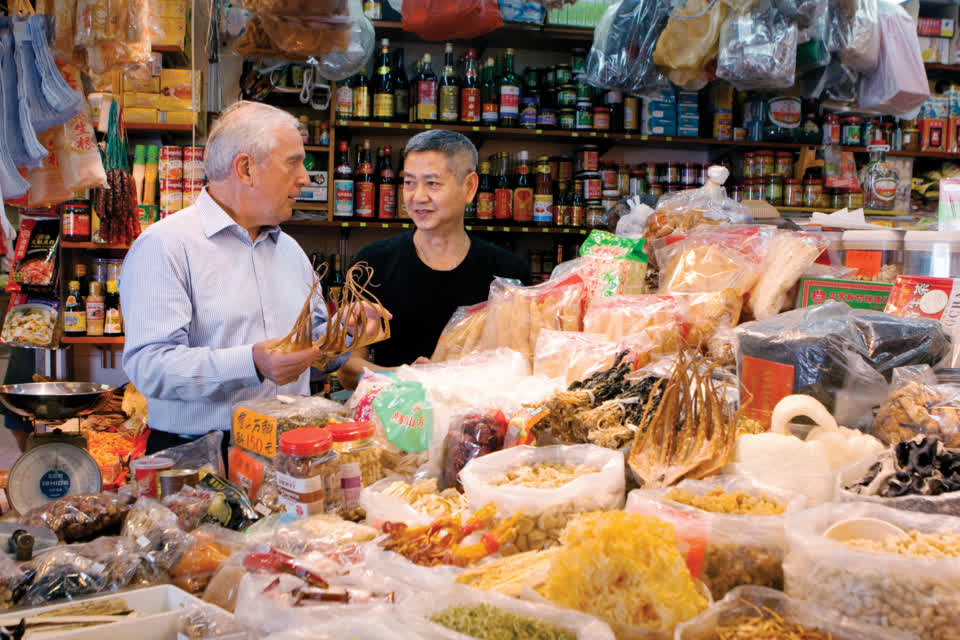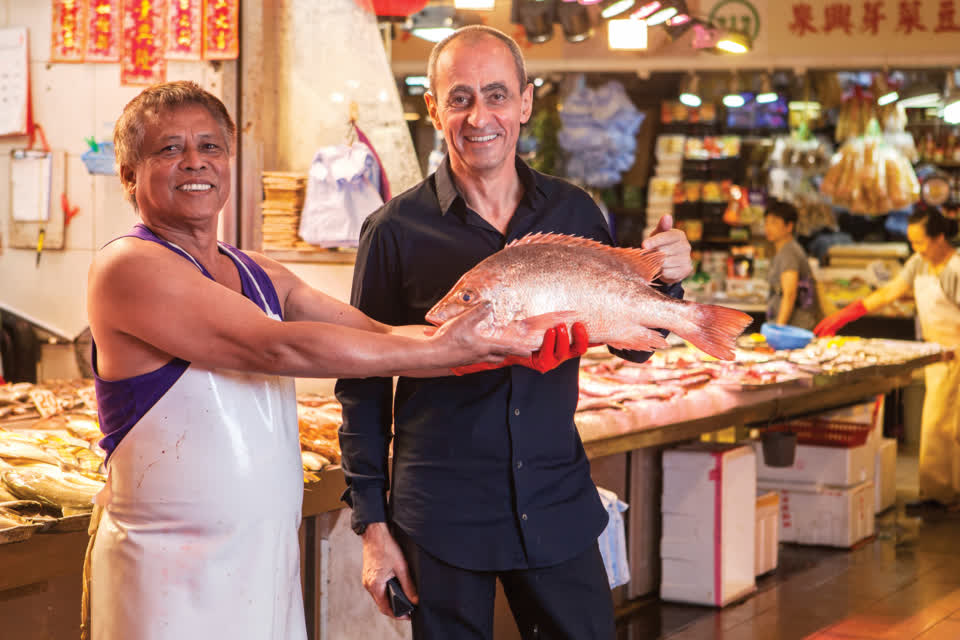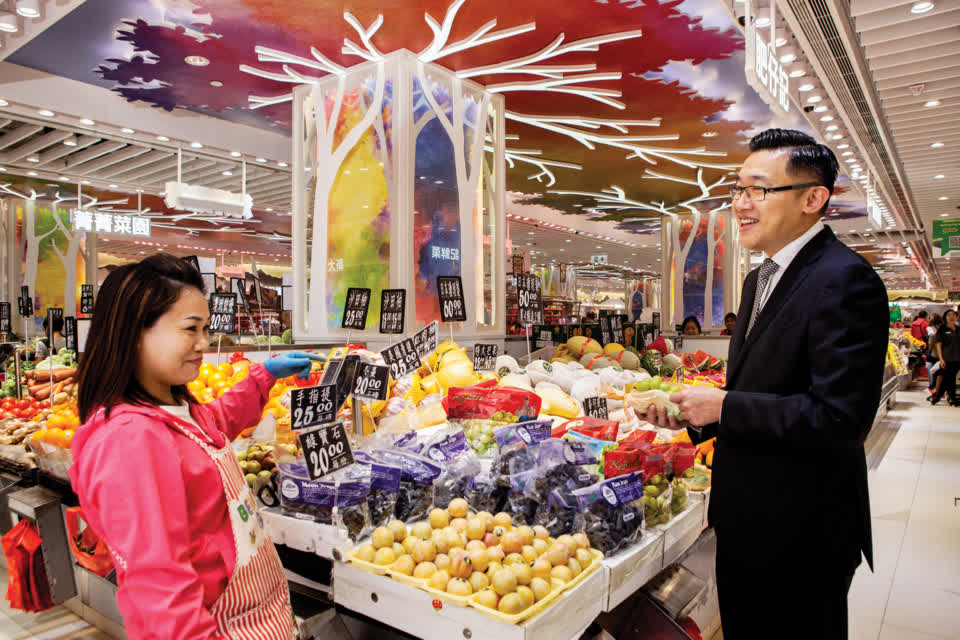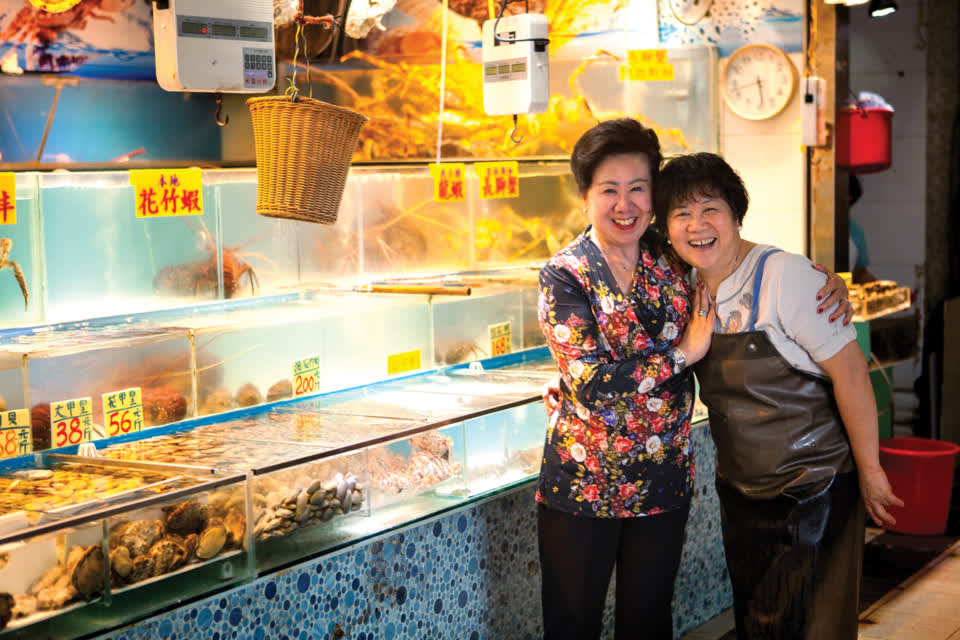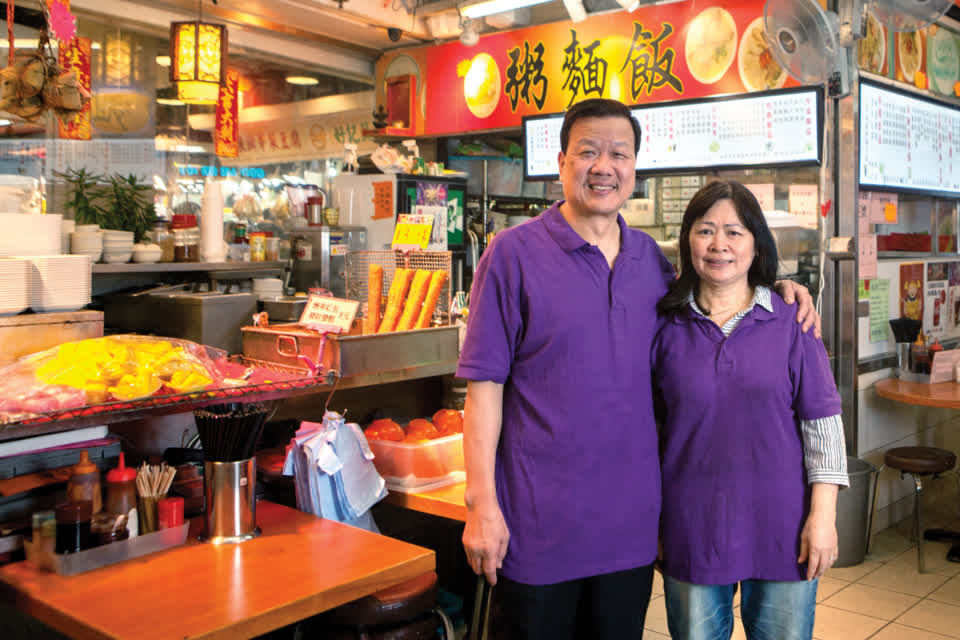BOLD DESIGNS
Max Wong, Director of Project and Operations, explains that design has to be fine-tuned to find a balance between a practical environment that is easy to maintain, and a pleasing environment that attracts shoppers. For instance, the materials used for the floor tiles have to be reasonably bright and colourful because that is what people expect in a shopping environment, but at the same time, there is very high footfall in a market, and so these materials also have to be durable and non-slippery. Shopping malls will often install glossy flooring but this is not suitable for busy markets where spillages often occur. A slightly rough floor surface would definitely be more practical, but if it’s too rough then it won’t look so bright, so a balance has to be struck somewhere between the two.
“In terms of colour, in terms of material, we will use some bold designs”
“On the walls in the common areas we will usually put some designs of fruits to beautify the blank walls,” Wong says. “But the new market at Nam Cheong is in Sham Shui Po, so we created a design related to Sham Shui Po – the hawkers, the old police station – and then we put it on the wall. We have found that some people are taking photographs there, selfies. So the same concept will be continued in other markets, just to create some uniqueness in each market.”
Griffiths agrees that it’s very important for each market to have the identity of its area.
“One of the things that can help with that is a cooked food offering embedded into the market,” he says, “because that’s where you get your stools out, where people stop right in the middle of the market eating their food. That’s one of the key things about a Hong Kong market; you can stop there and eat. The openness can bring a sense of vitality and meeting people, because you can see people, and then there’s the warmth and colour and vibrancy from having all the goods on display and good lighting to highlight them. Then, importantly, it’s not just a shopping activity. You can sit down and have some tea, have some noodles, talk to your neighbours, right in the middle of the market”.
Wong is now working on the renovation plans for the market in TKO Spot, Tseung Kwan O, and again he is aiming to do something slightly different.
“We are testing something a bit new in terms of design, and in terms of maintenance considerations,”
he says. “We are testing this design in an offsite mock-up first, but we will implement it in Spot Mart, and this one is interesting because upstairs there is the biggest Decathlon sports store in Hong Kong. I believe Spot Mart will draw a lot of people, and also Tseung Kwan O has a relatively young demographic. So in terms of ambience, design, we want to create something a little bit different.
“In terms of colour, and use of material, we will use some bold designs, and we believe it will be more appreciated by the young people. Also, a lot of foreign residents living in Sai Kung will come to Tseung Kwan O due to Decathlon, so in terms of design we want to create something quite different from before.”
Link has studied the way markets are designed and run overseas, but Griffiths points out that it’s important not to overplay the styles of older international markets, because they have just naturally accrued design over the years, according to the communities in which they exist.
“It’s not like somebody sat down and designed any of these markets in a very design-conscious way. In fact we, at Link, are probably some of the few people in the world who have ever consciously analysed our markets and said we are going to holistically redesign and reposition our markets. It’s never been done before.
